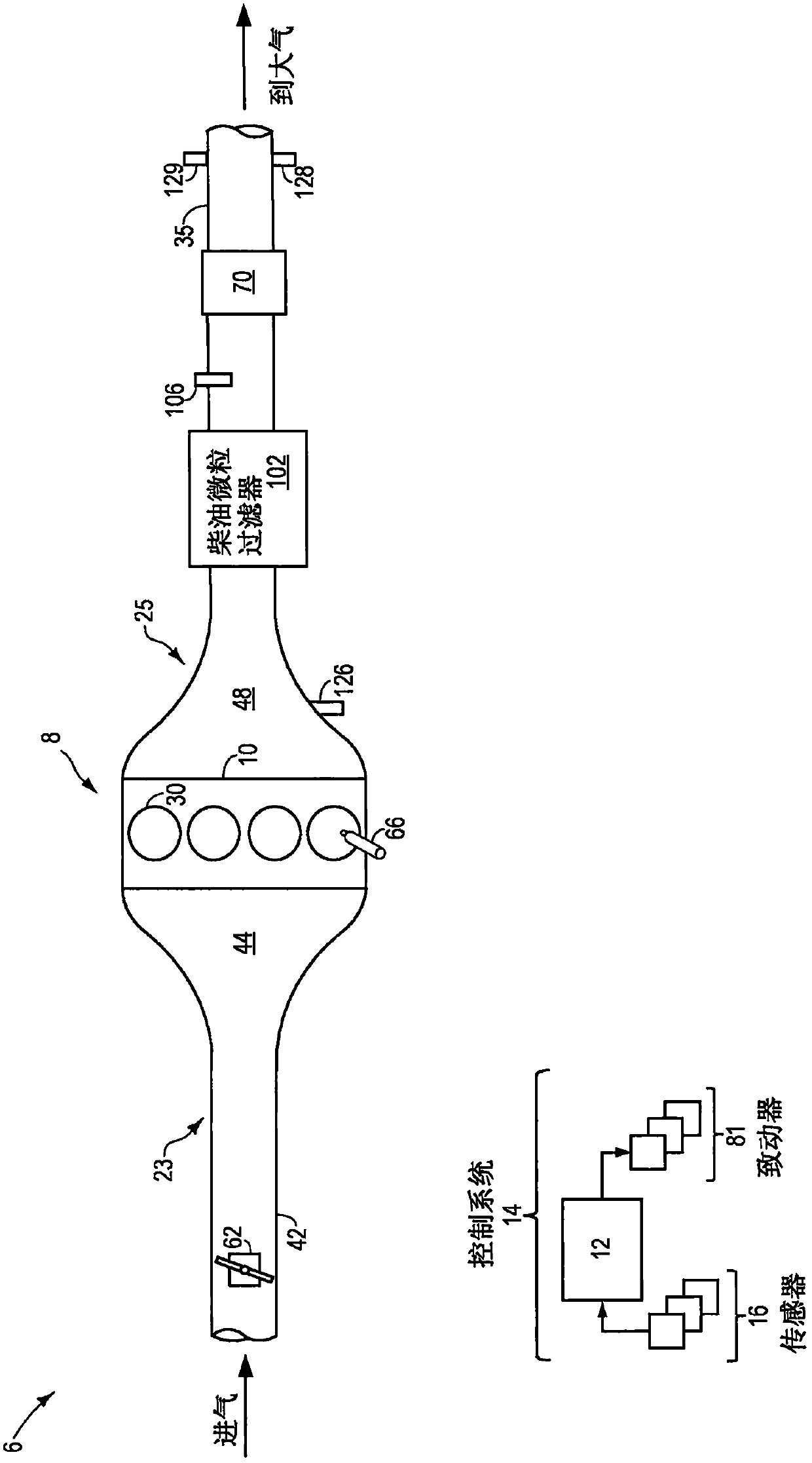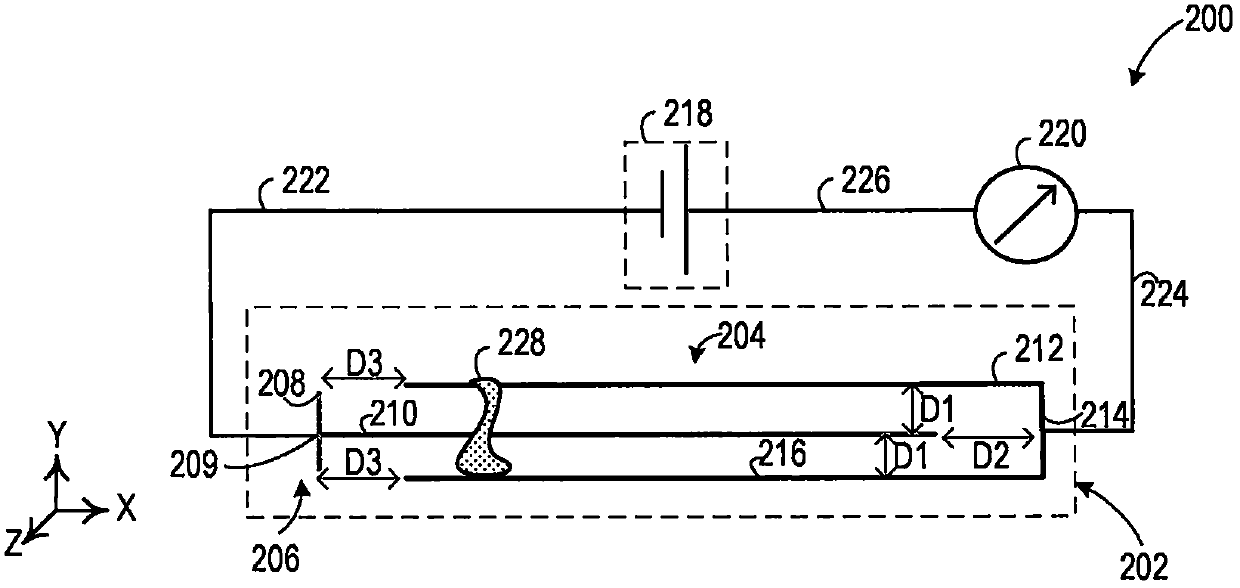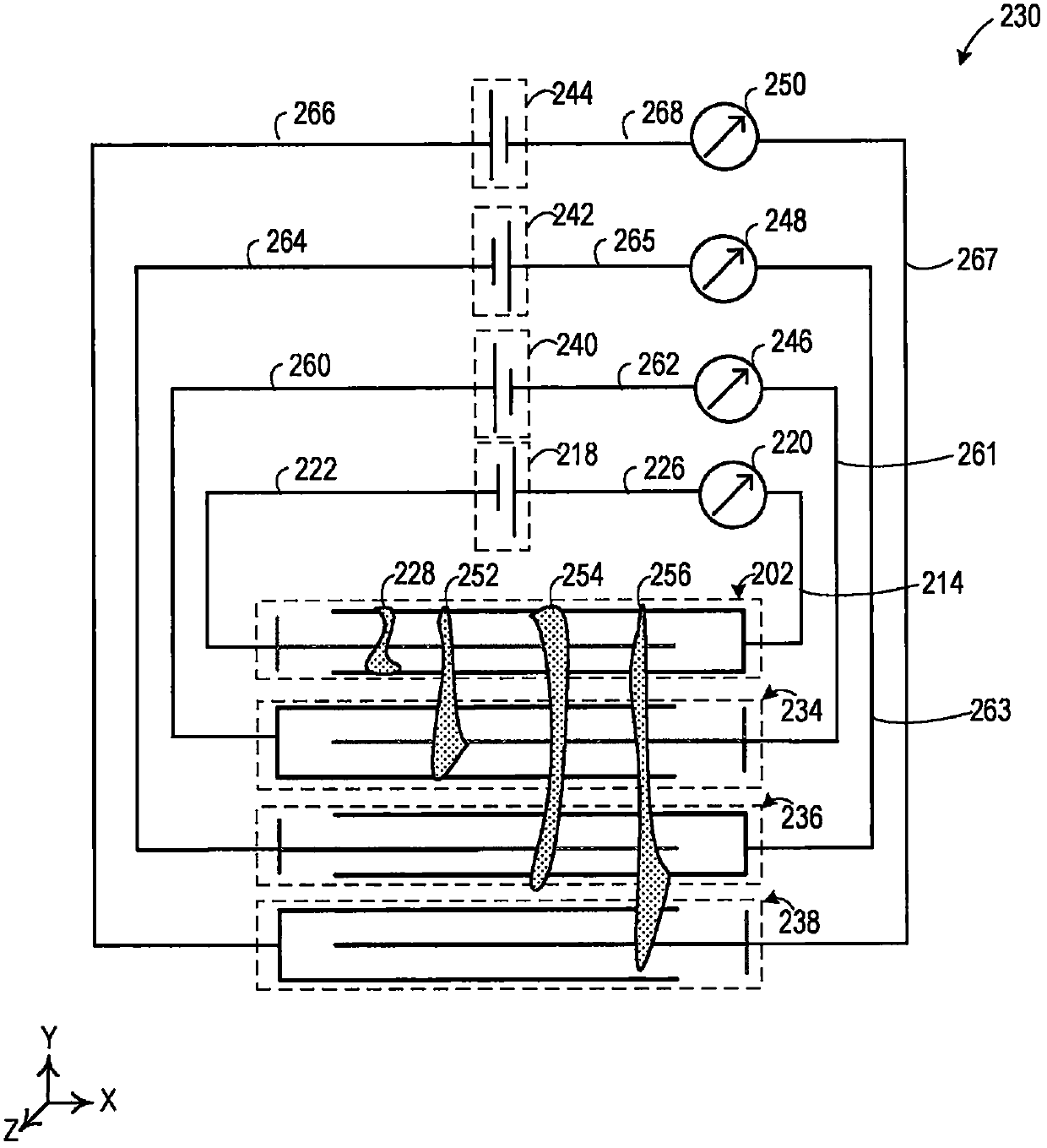Method and system for exhaust particulate matter sensing
A particulate matter and particulate technology, which is applied in the electronic control of exhaust treatment devices, diagnostic devices of exhaust treatment devices, exhaust devices, etc., can solve the problem of affecting the sensitivity of PM sensors, data output and diagnosis delays, and prolonging processing time etc. to achieve the effect of reducing the need for a large number of algorithms, accurate diagnosis, and extending the life of exhaust components
- Summary
- Abstract
- Description
- Claims
- Application Information
AI Technical Summary
Problems solved by technology
Method used
Image
Examples
Embodiment Construction
[0017] The following description refers to sensing engine systems such as figure 1 Particulate matter (PM) in the exhaust stream of the engine system shown in . as in Figure 2A An individual electrode pair of the PM sensor shown in may include a pair of interdigitated electrodes electrically coupled to a voltage source to generate a current based on particles accumulated between the electrodes. Multiple electrode pairs of the PM sensor (in Figure 2B shown in ) can be connected to multiple voltage sources to measure the current across each of the electrodes independently and summed together to produce the total current of the PM sensor ( Figure 2C ). The controller can be configured to execute control programs such as image 3 procedure) to differentiate particle size based on the total current of the PM sensor and to regenerate the PM sensor. Additionally, the controller can intermittently clean the PM sensor (as in Figure 4 shown in the method presented at ), to ena...
PUM
 Login to View More
Login to View More Abstract
Description
Claims
Application Information
 Login to View More
Login to View More - R&D
- Intellectual Property
- Life Sciences
- Materials
- Tech Scout
- Unparalleled Data Quality
- Higher Quality Content
- 60% Fewer Hallucinations
Browse by: Latest US Patents, China's latest patents, Technical Efficacy Thesaurus, Application Domain, Technology Topic, Popular Technical Reports.
© 2025 PatSnap. All rights reserved.Legal|Privacy policy|Modern Slavery Act Transparency Statement|Sitemap|About US| Contact US: help@patsnap.com



